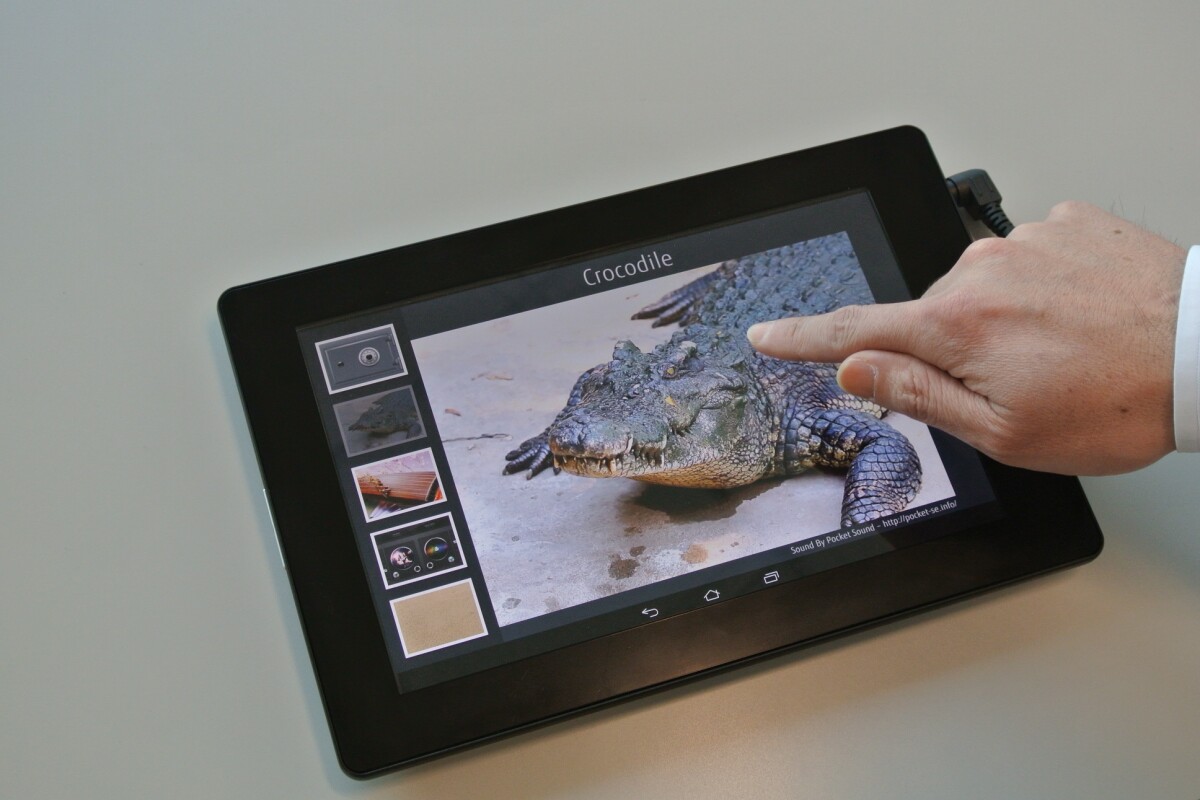Many smartphone or tablet users will already be familiar with receiving vibration feedback when typing on a virtual keyboard, but, though better than nothing, it's not particularly convincing. There have been attempts to make sensory feedback from touchscreens more realistic using electrostatic force, for example, or even creating the sensation of physical buttons by pushing liquid into prearranged tactile pixels, but Fujitsu is claiming to break new ground with its prototype haptic sensory tablet.
The system from the Fujitsu Labs division of the Japanese electronics giant emits ultrasonic vibrations under the surface of the tablet's display. The company says that although producing ultrasonic vibrations would generally require a good deal of power, its engineers have come up with a way of shrinking down the tech and allowing a tablet prototype to run its haptic feedback system.

Essentially, the vibrations create a layer of high pressure air between a user's tracked fingertips and the surface of the screen, resulting in reduced friction so the fingers can skate across the touchscreen like an air hockey puck. The effect can also be set to quickly alternate between high and low friction to create the illusion of a textured surface.
The company took the technology to MWC last week, where visitors were introduced to four demonstrations of the haptic sensory capabilities of the prototype tablet.
Folks were able to feel a CD beneath the fingers while spinning and scratching like a DJ, as well as physically feeling and manipulating the deck controls. They could open a vault by rotating a combination lock, get to stroke a crocodile, with the technology feeding back skin texture, or pluck an onscreen koto and feel the strings under their fingers.
Research continues to improve the technology, but the company is looking to commercialize the development by next year.
Source: Fujitsu Labs






